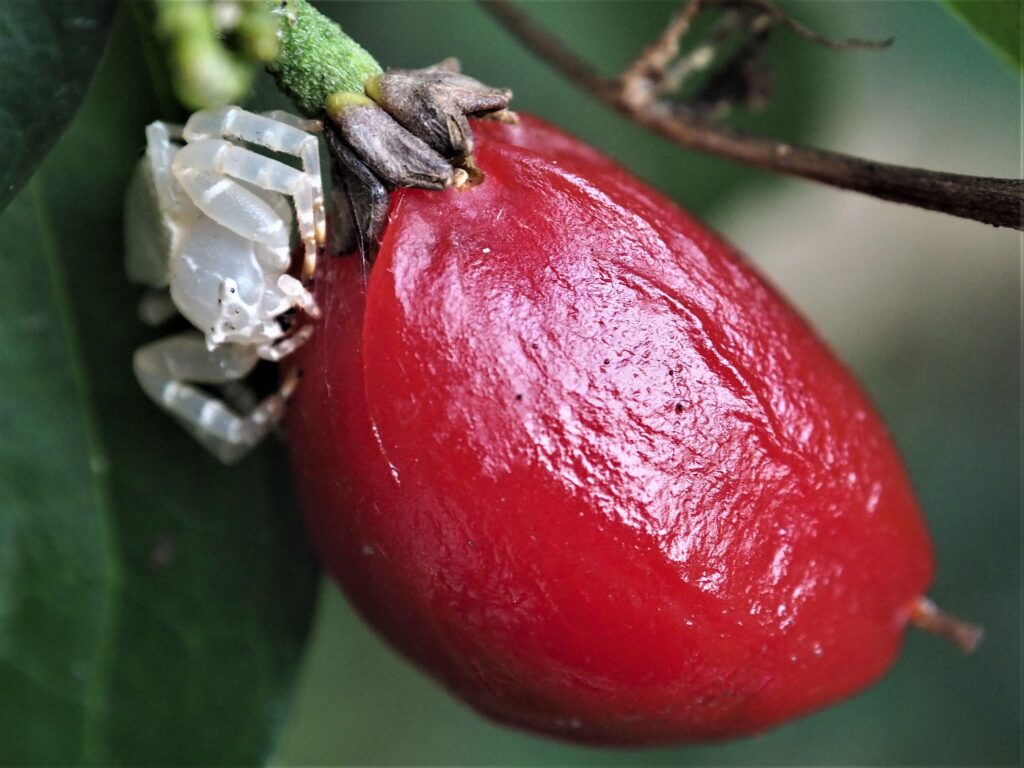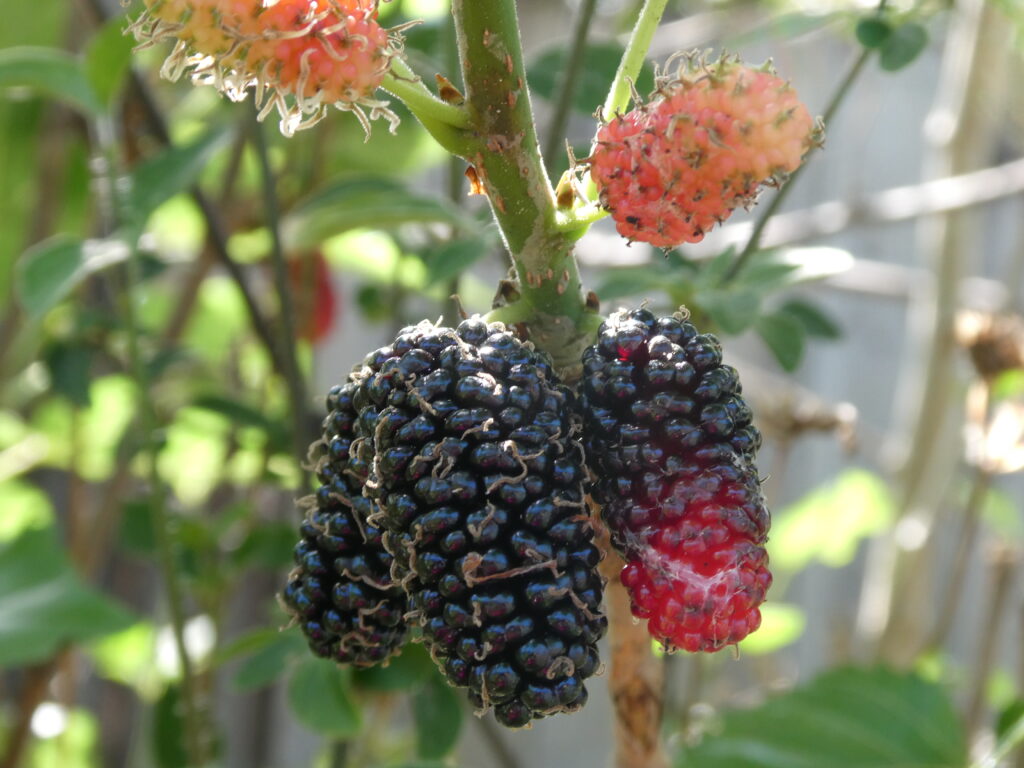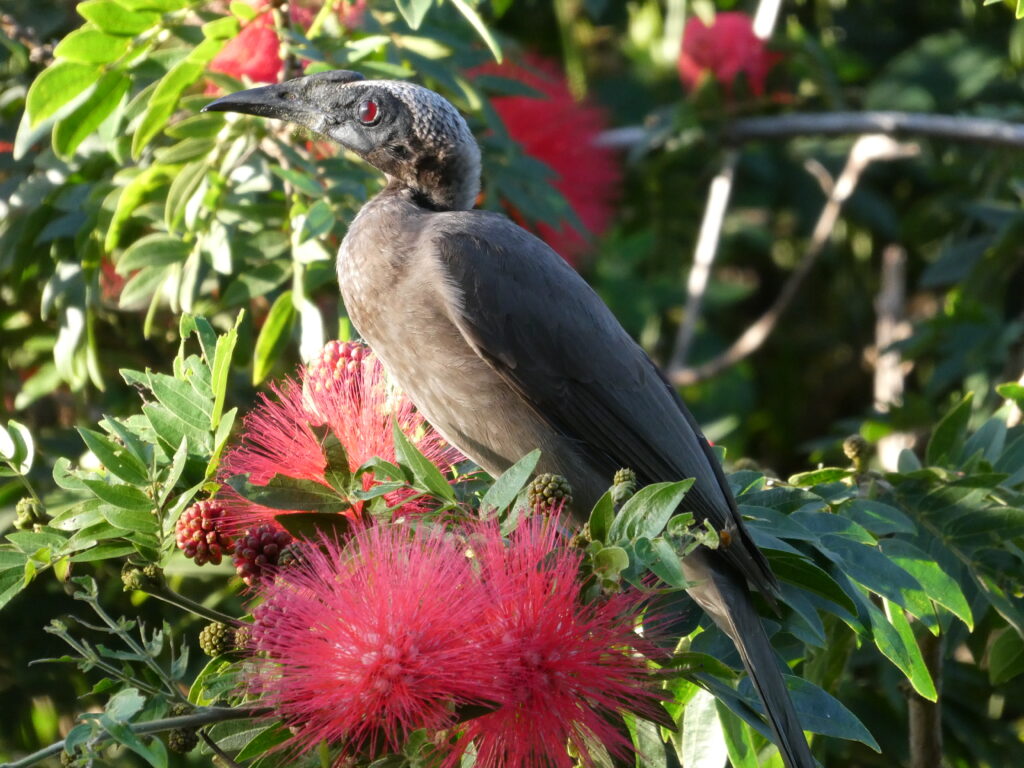I am not really a gardener. I’m a sort of gardener, a ‘whatever’ gardener. I simply don’t have the time and energy to do much. Nevertheless, when I had a house built on a small block of grassed clay soil, I decided to try. After decades of shrivelling any plant I was supposed to care for, I was starting from scratch in more ways than one. My aims in developing my scratch patch were to improve the soil and sequester carbon on a small scale, creating a habitat to feed myself and others, including other species. These intentions completely ignored the fact that I had no idea what I was doing.
So I started what is, essentially, an experiment. My whatever gardening is not a curated style of gardening. Instead of aiming for overall control, I mix up purposeful intervention with allowing whatever happens. My first action was to skirt around a patch of grass with the mower. As the grass grew longer, it became a spider patch. To help the spiders grow, I lured flies, moths and grasshoppers by throwing kitchen scraps on the ground. Seeds just happened to sprout into trees, which made more vertical space for spider webs and, incidentally, grew into a mini food forest of mango, peanut butter fruit, sweet sop, pineapple, pawpaw and passionfruit. My gardener friends inspired me to intentionally plant a few trees: Daintree Penda, Daintree Gardenia, Grevillea, a Little Evodia and some citrus. After less than five years, their branches are meeting, creating a canopy for birds, butterflies and a richness of bugs.
To a large extent this tangle of tropical life has come about through active undisturbing: deliberately letting it be. Taking tips from permaculture and regenerative gardening, I focus on whatever wants to grow. My raised beds are hectic sprawls of tropical greens. Some have come from swapped cuttings or seeds, others are volunteers, springing up from wherever. My mainstays are sweet potato leaves and the edible parts of the pumpkin plant: flowers, young leaves, fruit and seeds. This does not add up to rows of produce for a harvest. I browse my whatever garden like a herbivore, nipping off fresh tips and foraging for the odd fruit here and there. In the process, I am always noticing and learning, immersing myself in a web of interactions.
I am growing with my habitat in a creative act that does not privilege human agency. Recognising the interplay of species above and within the soil, it is obvious I am not the gardener in this habitat patch. I may have started from scratch, but in fact I am part of an ongoing multi-species gardening collective. It is not only my labour that makes the garden productive; in fact, it plays only a small part. Before I began, I thought I would be the one feeding other species, as if I was graciously sharing by letting caterpillars and grasshoppers eat some of my greens. Now I think of it more as the other way around. Collectively, the other species create the webbed ecosystem that allows my foodstuffs to grow.
It might not seem like much when I consider all the intense dedication and knowledge that goes intoO larger scale gardens and environmental projects. However, my Whatever Webs philosophy celebrates the connection of individual micro-actions for sustainable macro-change, on the basis that all small actions count. This might sound like making an excuse for when you think you are not doing enough. Well, sometimes that’s true. At the end of a hard day at work, I’m more prone to shred my long ‘To Do’ list and add it to a layer of mulch than actually tick anything off. But that’s okay. Whatever gardening takes into account whatever time, space, knowledge, funds, tools, energy, and enthusiasm the human participant has; whatever happens, at whatever scale, it adds value.
This article originally appeared in the Kuranda Paper October 2022 Edition.
Dr Helen Ramoutsaki is an Adjunct Research Associate with The Cairns Institute at James Cook University, a performing poet working in the Environmental Arts and Humanities with a focus on the Wet Tropics.






